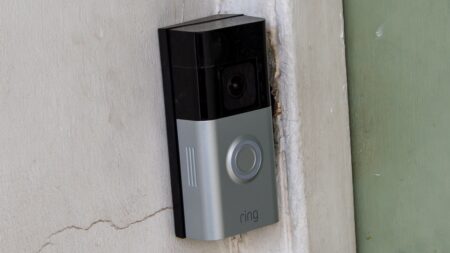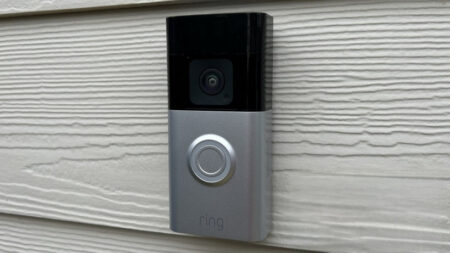Pre-roll is excellent but Ring misses the mark on battery life and packages
An excellent if chunky video doorbell, Ring 4 is super flexible as it can be installed anywhere, and the pre-roll feature goes a long way to mitigating the flaws of a battery-powered security camera. If you don't have the option to hardwire a video doorbell, Ring 4 is your best bet, but there are cheaper models out there if $200 is a bit steep for you. The Ring app is fully featured with a lot of options, but the lag time from ring to live view is still too slow and battery life could use further improvement.
Pros
- Works with Alexa
- Best value cloud storage plan
- Easy install
Cons
- No top to bottom view
- No package detection
- No Google Assistant or HomeKit
Flying cameras aside, we haven’t seen a lot of innovation from Ring recently. But with every new version of its flagship video doorbell, small iterations are making an excellent product even better. That’s the case with the latest offering, the battery-powered Ring Video Doorbell 4.
New model: Ring Battery Video Doorbell Plus review
Building on its unique battery-powered pre-roll feature it debuted in the now-discontinued Ring 3 Plus, the newest doorbell from Ring can now capture those extra few seconds before the motion detector was triggered in full color.
Top picks: The very best smart video camera doorbells
Pre-roll goes a long way to solving the back-of-the-head problem most suffer from. That’s where they only catch the action as it’s walking away because they had to wake up first.
Unfortunately, it doesn’t help with the other common problem among wireless buzzers – battery life.
The only other promised upgrade in the Ring 4 from the Ring 3 Plus is improved battery life. But we think it all went into powering those three extra cameras that capture pre-roll because we didn’t see any improvement.

However, all the Ring features we know and love are present and correct; including 1080p HD live streaming, a 160-degree field of view, HDR video, night vision, motion detection, motion and privacy zones, and two-way audio.
You also get customizable motion zones, advanced motion detection, and quick replies, plus some other smart notification features if you subscribe to the very reasonable Ring Protect plan.
Ring Video Doorbell 4 costs £179.99 and replaces Ring 3 Plus, but Ring 3 is sticking around at a lower price point and without pre-roll.
Verdict: Blink Video Doorbell review
A battery-powered/wired hybrid with a removable battery, Ring 4 is a good option for homes without doorbell wires. Although if you have some you can use them to trickle charge the battery so you don’t have to remove it as often.
Where does the Ring 4 stack up in the increasingly crowded video doorbell market? Does it best the Eufy Video Doorbell or top the Arlo Essential Wire-Free buzzer? How will it stack up against the new Google Nest Doorbell?
We’ve been testing Ring Video Doorbell 4 for a month now, read on for our full review.
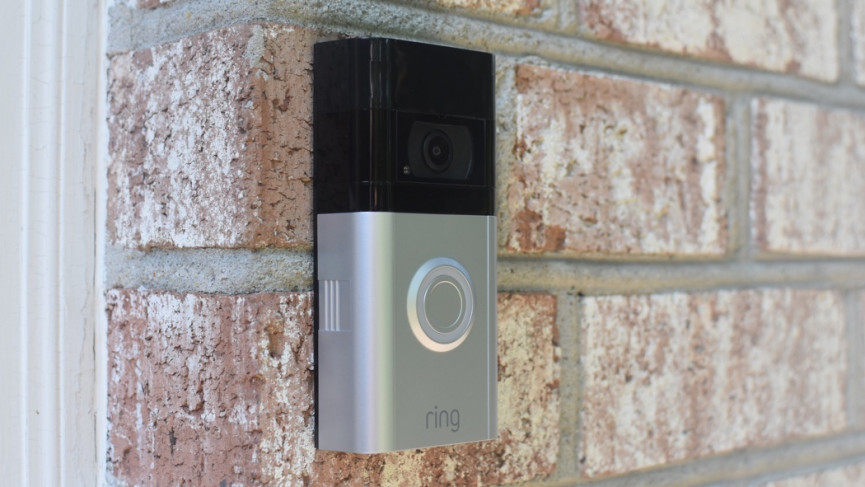
Ring 4 Video Doorbell: Design and installation
TL:DR: This doorbell looks like every other Ring Video Doorbell before it.
Ring goes with the “if it ain’t broke, don’t fix it” school of design theory, and upgrading to the Ring 4 from Ring 2 or Ring 3 isn’t going to elicit oohs and ahhhs of surprise and admiration from your regular visitors.
The biggest change is in packaging. Ring 4 comes in a much smaller box, more than half the size of previous models; a nice eco-friendly move that cuts down on waste primarily by not supplying a choice of doorbell covers.
Instead, you are supposed to receive an email for a free cover of your choice should the supplied Satin Nickel not work with your aesthetic.
We’ve set up two Ring doorbells that promise this but have never received that free offer.
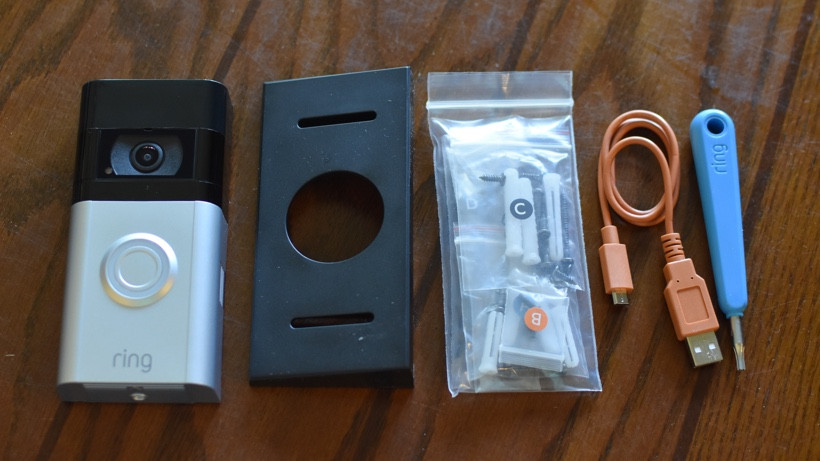
Install is similarly unchanged and remarkably easy, with Ring now ascribing to the handy “install by letters” form of instruction that makes finding the right screw for the right job much simpler.
You don’t get the super useful double-headed screwdriver anymore, you have to find your own Philips Head. Only the proprietary tool to pop in the device security screw is included.
To install the doorbell screw the included mount (angled or flat) onto your door frame or nearby wall then attach the doorbell (you can also just screw the doorbell directly to the wall with no mount if you want).
The main advantage of a battery-powered doorbell is that you can put it where it’s most convenient/will get the best view, not just where your doorbell wires are.

If you are hardwiring (in which case, buy a different doorbell – the Ring Pro 2 is our top pick, or the Arlo Video Doorbell is great, too if you’re on a budget), attach the mount then attach the wires to the back of the doorbell before mounting it. It takes all of 5 minutes.
Once the doorbell is set up and installed you might find you need a stronger Wi-Fi connection, especially if pulling up Live View or answering a ring on your phone or smart screen seems to take an age.
Ring has compatibility with 5GHz Wi-Fi networks, but if your doorbell is a distance from your router that won’t help at all.
Adding a Ring Chime Pro to your setup will improve connectivity as it boosts your Wi-Fi signal.
This plug-in extender that doubles as a doorbell chime made a huge difference in the speed of relaying the videos to our smartphone when we tested it with a Ring Pro 2. But beware – if anyone unplugs that Chime your doorbell will go dead.
Ring 4 Video Doorbell: Features & Performance
The main new feature of the Ring 4 is the color pre-roll that catches an additional 4 seconds of video before the motion detection kicks in.
It does this by using three extra, tiny, low-powered cameras that are always recording. To help reduce the impact on the battery life here, the cameras are constantly deleting and overwriting the footage, only serving it up when the main camera records a motion event
When pre-roll is available, it’s shown as a picture-in-picture when you enter into the Live View screen.
Tap on the picture-in-picture and it expands to the full screen and shows the Live View as the smaller image.
When you answer a motion event or a doorbell push with Live View, the content in the buffer is made available as a picture-in-picture so you can see what preceded the event.
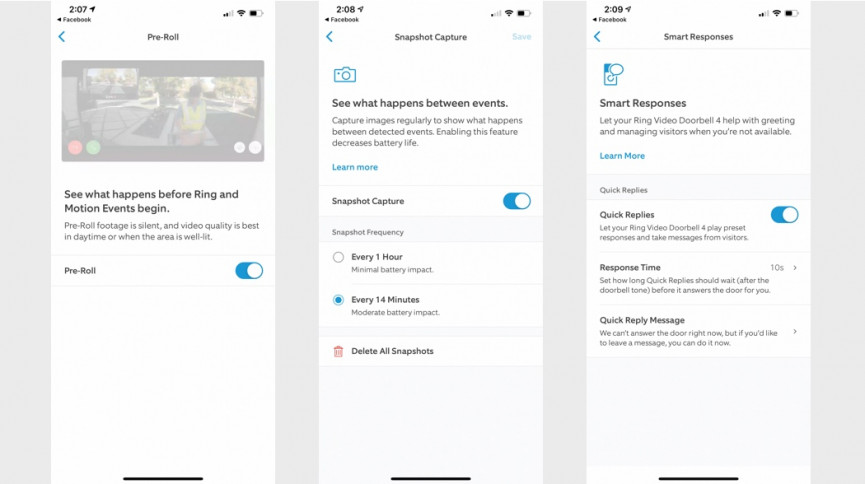
When you look at your recorded videos (if you have a Ring Protect plan), the extra few seconds show at the beginning of the recording, distinguished by being slightly blurry.
Ring says this is the only time pre-roll videos are stored in Ring’s cloud.
In practice, it works really well. And while you can see the change in the above video as it switches from low quality to high, it definitely gets you that initial context a lot of battery-powered cameras miss.
However, the pre-roll is pretty useless if you don’t pay for Ring Protect ($3 per month, or $30 for a year), in that case, you only see the pre-roll footage as a picture-in-picture during live view i.e. if you answer a Ring notification.

Video quality for the main feed is as good as on prior models.
Crisp and clear with good color and minimal artefacting, the video is 1080p HD, with HDR an option if your front door is backlit.
Night vision is excellent, as long as you can position the camera so that the infrared lights aren’t reflecting off anything.
The above still shot was taken when it was pitch black outside (I could barely even see the doorbell to press it). As you can see the detail is very clear, you can easily make out both the face and the background.
The only real downside on Ring 4 is the 16:8 aspect ratio and 160-degree field of view. It’s nice and wide to give an excellent view of the entire yard, but if you want to keep an eye on a package on your doorstep, you’re out of luck.
If you’re more interested in people than packages, this ratio works well. But if you have an enclosed doorway with walls on either side that won’t benefit from a wide view, pick up the Ring Pro 2, which gets you a true top to bottom view (it’s wired-only though).
The two-way audio was very good during most of our testing, although occasionally the voice came through with a bit of static. Lag time was minimal, 1 to 2 seconds, but the response time to answer a ring or motion event was slow, taking 8 to 10 seconds, which is slightly too long.
By that point, your visitor will have wandered off assuming you’re not home. (Quick replies can help with this, more on that in a bit).
Connectivity is still an issue, sadly. We had the doorbell mounted four feet away from an Eero Pro 6 mesh Wi-Fi router, through a brick wall. But it stubbornly sat on a 2.4 gHz band (it’s compatible with 5 gHz) and told us occasionally it had a shaky connection.
Additionally, battery life ran down very quickly in our testing. We installed the device on 9 July and by 1 August were getting low battery alerts. We did have several features on that Ring warns will use extra battery (including the very handy snapshot capture) but overall we were using the recommended settings.
Charging your doorbell once a month is not a great experience.
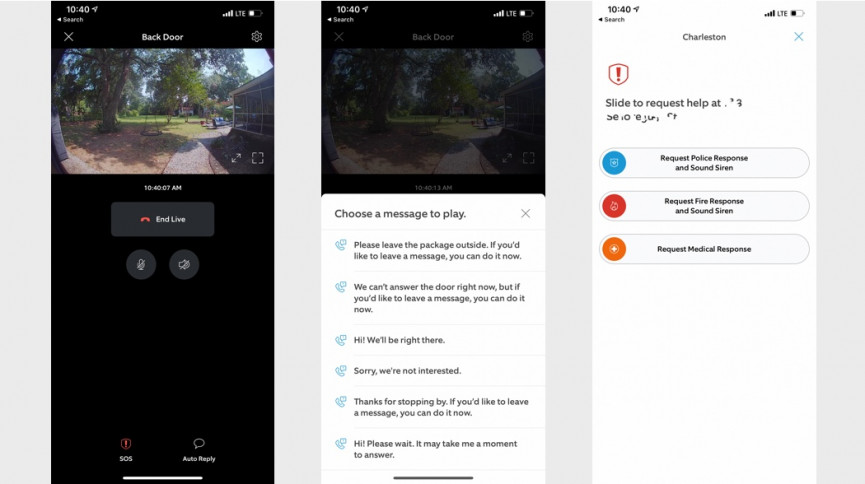
Ring 4 Video Doorbell: App and everyday use
The Ring app is packed with features, although you need to pay for Ring Protect to get access to the most useful ones.
All together most of the features are designed to cut down on unnecessary notifications, so you only get alerted when there’s actually something going on outside your door.
Customizable motion zones let you cut out waving tree branches and privacy zones allow you to block your neighbor’s driveway.
A people only mode is super helpful for only sending you a notification when there’s a warm body out front (it still records other motion events though, and you can scroll through those on the Ring app timeline).
There is still no package detection or any other form of smart alerts, such as vehicles or animals, which most of the competition now offer.
The timeline is a really nice feature of the Ring app, and if you enable snapshot mode the doorbell takes a snapshot automatically every hour, 14 or 5 minutes, and adds that to your timeline.
This lets you scroll back through the timeline to see all the snapshots, motion events, and “rings” in a sort of stop-motion video feed. Both snapshot mode and people-only mode require a Ring Protect Plan.
We also really like the quick replies feature, which is free and offers a selection of responses you can set the doorbell to offer up either automatically after a set period of time or by selecting one when you answer a ring in the app.
The “Hi! We’ll be right there” option is a good one to have switched on if you find it takes a while for your feed to pull up, as it can help keep your visitor on hand while the connection loads.
Rich notifications finally arrived late last year, and you can get a snapshot of the recorded video on your lock screen with each push notification.
This does require a Protect Plan and in our testing wasn’t very consistent – arriving on maybe 4 notifications out of 10.
Ring’s subscription plan, Ring Protect, is very affordable – $3 a month or $30 a year for 60 days of video storage on one camera or doorbell.
The Protect Plus Plan is $9.99 a month and gets you the same storage for an unlimited number of cameras and 24/7 professional monitoring if you have the Ring Alarm security system.

Ring 4 Video Doorbell: Integrations
Of course, Ring works with Alexa, as both companies are owned by Amazon, and Alexa integration is excellent.
You can set any Echo speaker to act as an indoor chime for your doorbell, and any screen-based Echo display can automatically pull up a two-way audio/video call with your doorbell. You can also use your Fire TV to view doorbell footage.
Ring devices only work with Amazon’s Alexa for voice control and smart screen integration, there’s no integration with Google Home or HomeKit – but with the new Matter protocol we may see some changes here in the future.
Ring does integrate with Samsung’s SmartThings, and there are now two door locks that you can unlock directly from the Ring app – Schlage Encode Smart Lock and Level Lock. You can also add your smart garage door opener to the Ring app.
Ring 4 also works with all Ring’s own devices nicely, thanks to the Linked Devices feature.
This lets you connect all your Ring cameras together in the app and have them react to each other. For example, when your doorbell senses motion you can have it tell the Stick Up Cam in your hallway to start recording.
Which Ring is which?
Ring has a wide range of video doorbells, so it’s easy to get confused as to which one’s which, which does what differently, and – most importantly – which one’s right for you.
Here’s a quick rundown of the latest lineup.
You’ll see there’s no Ring 3 Plus anymore, it’s been retired to make way for the Ring 4, and the entry-level Ring is the second-generation Ring, not to be confused with the now discontinued Ring 2:
- Ring Video Doorbell Wired: £79.99
- Ring Video Doorbell (2020): £89.99
- Ring Video Doorbell Pro: £159.99
- Ring Video Doorbell 3: £139.99
- Ring Video Doorbell 4: £159.99
- Ring Video Doorbell Pro 2: £219.99
- Ring Video Doorbell Elite: $349.99
- Ring Peephole / Door View Cam £119.99
All the doorbells share the same 1080p HD video quality for live streaming, the same app, and many of the same features, some of which require subscribing to Ring Protect Plan to get.
You’ll also need to pay to view and access recorded video on any Ring doorbell.
The main differences come in how they are powered (built-in battery, removable battery, or wired), their connectivity (2.4GHz, 5GHz or Ethernet), and their design/form factor.




